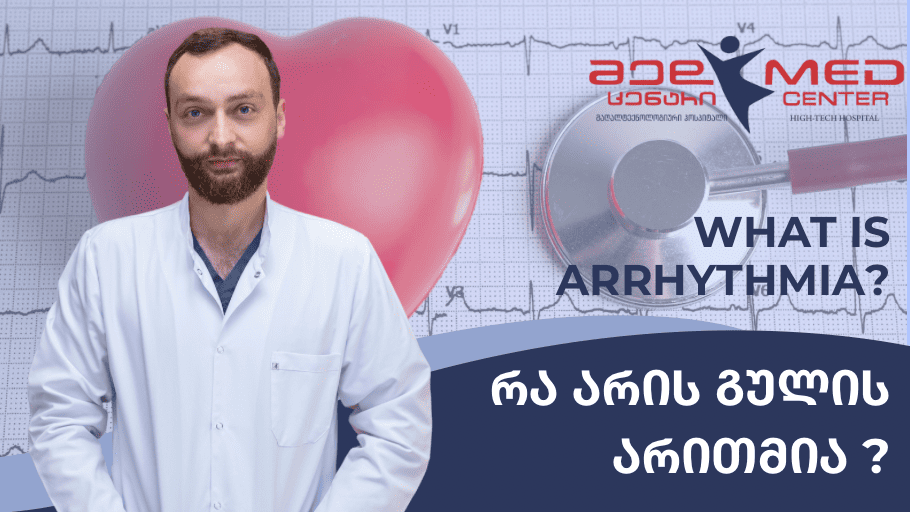Heart rhythm disturbances
What is arrhythmia?
Arrhythmia is a condition where the heart beats irregularly (irregularly), either too fast or too slow.
What is a normal heartbeat?
It is considered normal when the heartbeat is regular and the heart rate is between 60 and 100 beats per minute. On average, the heart beats (expands and contracts) 100,000 times a day.
What causes arrhythmia?
Diseases and injuries of the heart (presence of a scar in the heart, cardiomyopathies, reduced ejection fraction, damage to the valvular apparatus of the heart and others), disturbances in the level of electrolytes (for example, potassium) in the blood, certain medications, conditions after heart surgery, caffeine, excessive exercise, strong emotions, stress, alcohol, tobacco, thyroid dysfunction.
What forms of arrhythmia are there?
– Tachycardia – or rapid heartbeat (pulse rate is more than 100 beats per minute): Tachycardia can be physiological (for example, during physical activity) and pathological (for example, atrial fibrillation, the so-called atrial fibrillation, atrial flutter, supraventricular tachycardia, ventricular tachycardia, ventricular fibrillation and others).
– Bradycardia – or slow heartbeat (often the pulse is less than 60 beats per minute): Bradycardia can be sinus (for example, in physically well- trained individuals) and pathological (sick sinus syndrome, atrioventricular block and others).
– Nonrhythmic arrhythmia – extrasystolic arrhythmia, that is, loss (“skipping”) of the pulse, atrial fibrillation.
What symptoms (complaints) characterize arrhythmia?
Very fast heart rate, very slow heart rate, irregular heartbeat, skipping pulse, fluttering in the chest, dizziness, feeling very tired, weakness, feeling foggy, short of breath, anxiety, chest discomfort , blurred vision, darkened vision, a feeling of fainting or something similar, as well as episodes of loss of consciousness.
Heart rhythm disturbances (arrhythmia) can occur without complaints, in which case we recommend that you consult a specialist for a preventive examination.
How is arrhythmia diagnosed?
– Taking anamnesis (complaints)
– Electrocardiogram – records the electrical activity of your heart.
– Holter monitoring is a portable device that can record heartbeat activity (cardiogram) for 24, 48, 72 hours or more.
– Implantable loop recorder – this small device is implanted underskin (the projection area of the heart) and records the heartbeat over a long period of time.
– Echocardiography – cardiac ultrasonography
– Physical activity test – treadmill test, bicycle ergometry
– Laboratory tests (blood)
– Electrophysiological studies are the gold standard for arrhythmia studies.
How is arrhythmia treated?
To treat arrhythmia, you need to visit an arrhythmologist. Treatment may include lifestyle changes (a healthy lifestyle can help you avoid heart injury, which can cause some heart rhythm problems) as well as medications and invasive interventions. Invasive treatment methods are:
– Implantation of a pacemaker (pacemaker) – used to treat a sharply slow heart rate.
– Implantation of a cardioverter-defibrillator – used for life-threatening arrhythmias.
– Ablation – removal of the source of arrhythmia. This procedure is performed by puncturing the femoral vein, during which the source of arrhythmia existing in the heart is “burned out” (thermal ablation) or “frozen” (cryoablation).
Doctor: Buhuti Beridze
cardiologist, arhythmologist





 ქართული
ქართული Русский
Русский